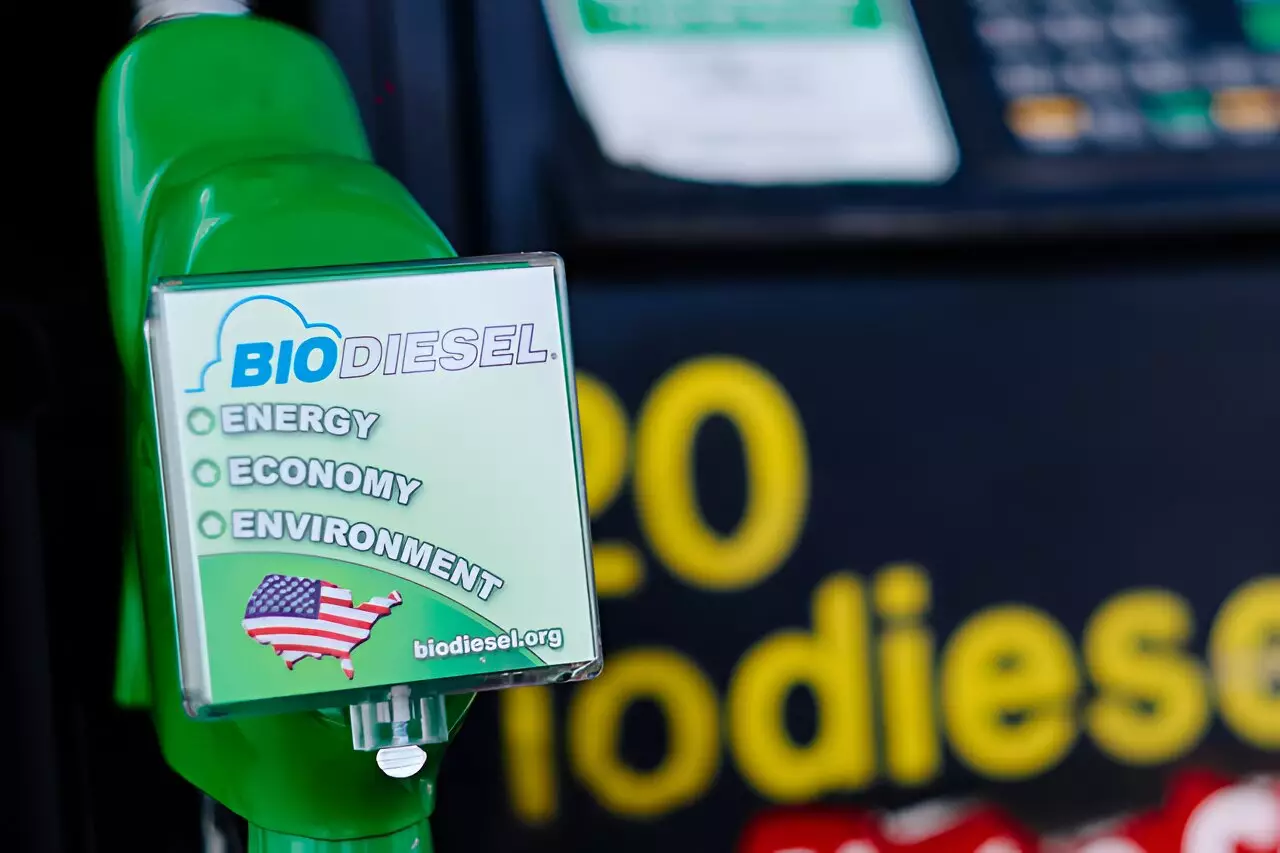The transition to sustainable fuels is imperative in combating climate change, and biodiesel emerges as a particularly promising option. Despite the benefits, the current use of biodiesel remains limited, primarily blended into conventional petroleum diesel at low percentages of 5% to 20%. Recent investigations by researchers at the National Renewable Energy Laboratory (NREL) reveal critical insights into the barriers hindering the broader use of higher biodiesel blends. This article explores these findings and the scientific advancements that could facilitate a more sustainable future for transportation fuels.
NREL’s research targets blends of biodiesel exceeding the conventional threshold, specifically analyzing mixtures of 20%, 40%, 60%, and 80%. Such higher concentrations pose a significant opportunity to substantially reduce greenhouse gas emissions in the transportation sector, which remains a leading contributor to climate change. Biodiesel, derived from fats, oils, and greases, is produced through a process known as transesterification, while renewable diesel, chemically akin to petroleum diesel, is made from similar feedstocks but through different processing methods. The prospect of increasing biodiesel’s blend ratio could lead to reductions in carbon emissions by as much as 86%, depending largely on feedstock selection.
Despite the enormous potential of biodiesel, Robert McCormick, an NREL Senior Research Fellow, points out a significant research gap: the vast majority of studies focus on blends lower than 20%. The recent paper titled “Properties That Potentially Limit High-Level Blends of Biomass-Based Diesel Fuel” seeks to fill that void. By investigating the properties of biodiesel blended at higher concentrations, this research promises to transform our understanding and utilization of these renewable fuels. Current heavy-duty applications, such as long-haul trucking and marine shipping, are expected to continue relying on liquid fuels even as the advent of electrification rises, underscoring the urgency to expand biodiesel usage.
Understanding the Technical Challenges
While the study reveals a pathway to higher biodiesel blends, it also highlights significant technical challenges that arise particularly beyond the 50% blend mark. Notably, the physical and chemical properties of biodiesel diverge from those of traditional petroleum diesel, posing potential operational difficulties. One major concern lies in the cloud point—the temperature at which wax crystals begin to form—as oils solidify. For example, biodiesel sourced from soy exhibits a cloud point of approximately 32°F, which can be problematic in colder climates, where engine performance may be severely affected due to fuel filter clogging.
However, strategies exist to navigate these challenges. One such approach is blending biodiesel with various hydrocarbon blendstocks that can lower the cloud point, thereby mitigating winter performance issues.
Research indicates that solutions can be implemented to manage the higher boiling point of biodiesel, notably through the incorporation of hydrocarbons like kerosene. These approaches promise to enhance cold-start reliability and prevent engine complications without compromising emission control systems. Furthermore, advancements in fuel chemistry, such as the addition of antioxidant additives, can bolster oxidation stability—a property that may diminish when utilizing greater biodiesel percentages.
The identification of these challenges presented by the NREL research serves not only as a critical feedback loop for ongoing biodiesel blending innovations but is also crucial for guiding future studies. The inherent complexities of biodiesel blends necessitate a collaborative approach that brings together scientists, policymakers, and industry stakeholders to cultivate an improved understanding of biodiesel’s role in sustainable energy.
As the transportation sector grapples with the pressing need for sustainable alternatives, the transition to higher blends of biomass-based diesel signifies a pivotal opportunity amidst the climate crisis. NREL’s comprehensive investigation sheds light on the current limitations and offers actionable solutions—positioning higher percentage biodiesel blends as viable candidates for reducing emissions.
Continued collaboration across scientific and industrial sectors will be paramount to refining these fuel mixtures, overcoming technical barriers, and achieving compatibility with existing engines. As global energy demands evolve, enhancing and increasing the role of biodiesel in our fuel mix could not only spur significant environmental benefits but also drive innovation in renewable combustion technology. Ultimately, promoting higher concentrations of biodiesel could usher in a new era of sustainable transportation fuel, paving the way for a greener, more resilient future.


Leave a Reply